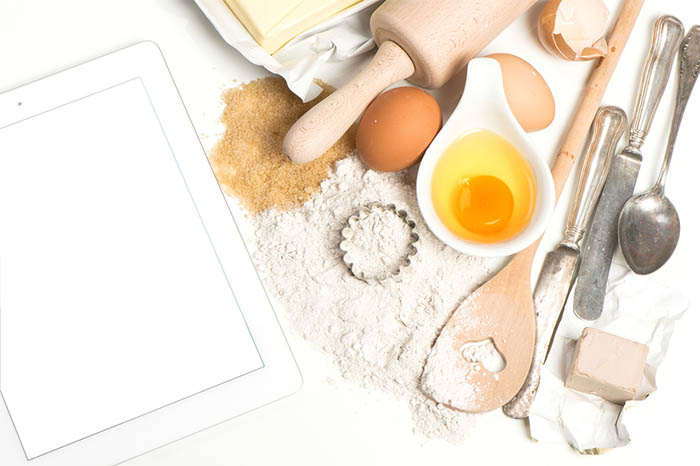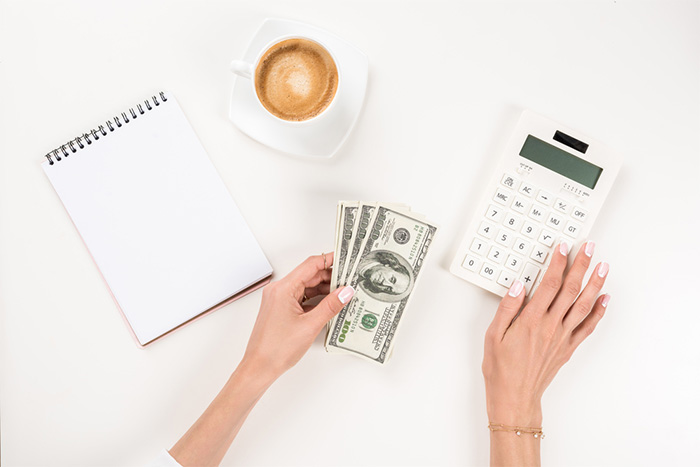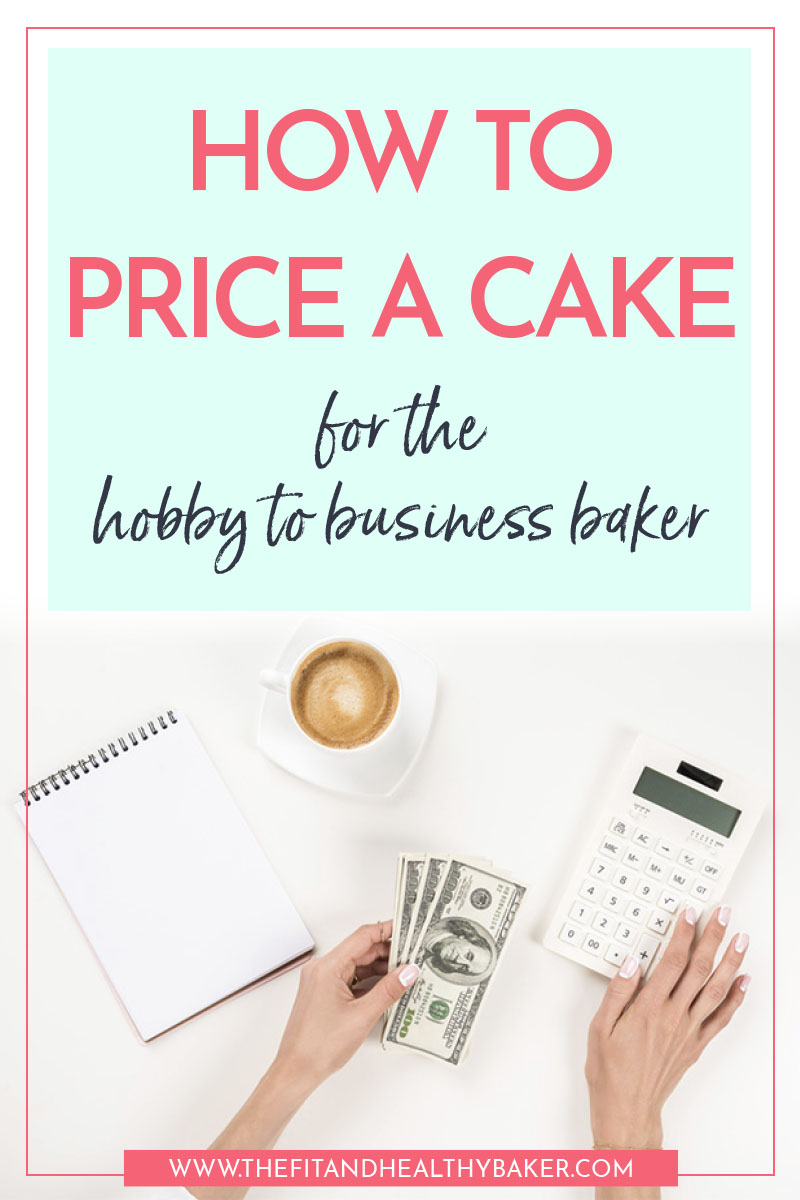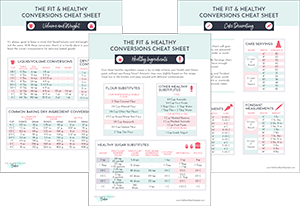You started cake decorating as a hobby, you really enjoy it, and you’re really good! Now people are telling you that they will pay for you to make them a cake. What do you charge them? You have no clue… you feel guilty charging people! Keep reading to learn how to price a cake and never feel clueless or guilty about it again.
Coming across the dilemma of how to price a cake is a wonderful thing. It means that people love the work you do so much that they’re willing to pay for it. Congratulations!
About a week ago, a picture of my first paid cake popped up on Facebook as a memory from 9 years ago. I honestly can’t even remember how much I charged for that cake. I know it wasn’t enough though. At the time, I barely had the necessary tools to effectively decorate my cakes. I was surprised that I was being asked for a paid cake!
WHY I PRICED MY CAKES LOW WHEN I STARTED
Pricing my first cake low was okay with me because I couldn’t believe that somebody wanted to pay me to make them a cake. It was a coworker, and I still appreciate him for seeing the possibilities in me to make my cake hobby a business.
Then, more people started asking me for cakes. Although I felt clueless about how to price them, I felt fairly comfortable with my low prices. I was brand new at this. I knew I needed more experience.
But then THAT person came along that took advantage of my lack of knowledge of pricing. They haggled to such a low price, that I almost felt like I was paying them to make the cake! In a way I was. It wasn’t the easiest cake to make, so I spent a lot of time on it. In the end, I just barely charged the cost of materials.
So, I vowed to never allow that to happen again. The following week I signed up for a class that taught me how to price a cake.
HOW TO PRICE A CAKE: SIX VARIABLES TO CONSIDER

It’s true that coming up with cake pricing is not that easy, but it’s not impossible.
Where do you go to ask the question? A Facebook group for cake decorators? You can, and people are very helpful in all those groups. The problem is that they can’t give you an accurate number because everybody lives all around the world. Cake prices include many variables, and location is one of them. In fact, prices vary from city to city.
Another important thing to be aware of is that every state has different laws and requirements for selling food. In some states, you cannot sell food from your home. Others may allow it, but with many restrictions, such as the kitchen used is for the sole purpose of the business.
Aside from that, you are also required to pass food safety exams, purchase insurance for your business, get licensed to sell food, and other location-based requirements.
That being said, there are a number of bakers that start as hobby bakers and then transition to a business. That means that they end up working from home during that transition. Regardless of how you do it, it’s important to know how to price your cakes. Here’s what you should start thinking about:
- Market Rate
- Level of Experience
- Quality of Product
- Business Expenses
- Cost of Materials
- Cost of Your Time
To make your calculations easier, base them all on an 8-inch 3-layer cake. This will make your calculations more focused and less overwhelming. For example, when you calculate materials, you will include the price of the number of cups of flour used in an 8-inch 3-layer cake, not the price of the entire 5 lbs. bag of flour.
MARKET RATE
Knowing how much other businesses in your area charge for cakes is crucial to pricing correctly.
If you charge well above the rate of other bakers, you might find that people won’t order from you. Charging well below the rate, you’ll be cheating yourself and everybody else around you. Neither one of these situations is good.
You might wonder why I say that undercharging is cheating you and other bakers. First, you have expenses that must be covered. For example, while you already pay for water and electricity, these expenses increase when you’re baking.
At the end of the year, when you do your taxes, you don’t want to learn that you spent more than you earned. Btw, you should be clear on this month to month if you’re managing your business well.
To me, cheating other bakers is even worse. It’s harmful to other businesses when clients expect them to meet rates that leave them with no profits. It’s not sustainable for you or the other businesses.
I don’t believe anybody underprices their cakes on purpose. Most of the time, people are just afraid to charge what their time and effort are worth. This is especially true when you go from hobby baking to a business.
HOW TO FIND OUT WHAT THE MARKET RATE IS

Let’s start with finding out what the market rate is for your area. Think about this as a range. Once you have this range, you can figure out where you fall within it. It gives you an excellent measure of how feasible your cake prices are once you follow the remaining steps on how to price a cake.
For example, a boutique bakeshop is going to have more overhead costs than a supermarket. The quality of the cakes will be different too. The boutique shop’s cake pricing will be higher than the supermarket’s. But you should know what they both charge.
To find out, call around to ask for their prices. Be specific. Ask for the price range on buttercream, fondant, non-sculpted and sculpted cakes, cupcakes, and cake pops. If they have a price list, even better.
When you call, please be polite and try not to take up a lot of their time. This is valuable time they could be spending on clients who will actually buy from them.
Compare quality and prices when you come up with the range in your area.
LEVEL OF EXPERIENCE
If you’re a hobby baker, be realistic about your skills and the amount of experience you have. Be honest with yourself.
There are people who are so artistic that their first cake will look professional. For others, it takes more time to get the hang of creating art with this medium. Both may end up with the same quality of cakes over time, it’s just that one arrived there earlier.
If you still need more experience, don’t price yourself at the high end of the range.
That being said, even if you’re a beginner, you may not need to go as low as supermarket prices. This is assuming they fall at the lowest end of the price range. You must, at a minimum, cover your costs. And this goes beyond materials, keep reading.
QUALITY OF PRODUCT
There’s a big difference between making a cake from scratch and making a boxed cake. It takes more time to start with. There’s also a difference between buttercream made with Crisco and buttercream made with high ration vegetable shortening.
I would not be happy if I paid top dollar for a boxed cake covered in buttercream made with Crisco. I’m not saying how you should make your cakes. I’m not even suggesting you use American buttercream or fondant. It’s your choice. Just take the quality of products into consideration when you are deciding how to price a cake.
I do suggest that if you plan to go into the cake business, consider making top quality products overall. In the end, it’s all up to you, but you want to establish a good reputation that will later lead to higher paid cakes.
BUSINESS EXPENSES
There’s a vast number of business expenses to consider. But let’s go over some basics.
You remember earlier when I mentioned all the licensing requirements of your area? Some of those are annual expenses. They should all be taken into account.
You also need to include electricity, water, gas, the cost of an accountant (if you will be using one for your business), advertisement, rent, and any other business cost. All of these should be calculated at a fraction.
Let’s use electricity as an example. Take your annual cost, divide it by 8760 (the number of hours in a year). This equals your electricity cost per hour. If it takes you 3 hours to make an 8-inch 3-layer cake, you multiply the electricity cost per hour by 3.
If you purchase a camera, edible printer, or anything else that you use for your business, take it into account.
This doesn’t mean that you’ll be charging every month one-time purchases. But, overall, your revenue should be able to cover these expenses.
Legal and marketing fees should be considered as line items under your business expenses as well.
QUICK TIP: Legally register your business name ASAP and buy your website domain as well. If you don’t, somebody can come along and take it. Once that happens, they can ask you to stop using your business name!
COST OF MATERIALS

As I mentioned earlier, when adding up the cost of materials, you do not add the full amount of each material, rather the amount used for an 8-inch 3-layer cake.
For example, 1 cup of All-Purpose Flour is about 4.25 oz or 1/18th of a 5 lbs. bag of flour. Let’s say you paid $4 for that bag of flour and you used 2 cups of flour in your cake. Here’s what you spent on flour for an 8” round cake:
$4 ÷ 18 = 0.22
When you calculate this number for the remaining materials, then you will add everything up to come up with the total cost of materials. I know this seems a little tedious. But, if you’re creating a business plan, you should calculate this out anyway.
If you’re looking for a simplified cost per serving, your market research will help you with that number. However, having a general sense of how much you spend on materials will let you know if you’re making a profit.
Always try to research sales and low prices on materials. I first check on Amazon but be aware that sometimes you’ll find lower prices elsewhere. I also check the Craftsy everyday clearance on baking supplies. But I don’t stop there. Check Walmart, Michaels, Hobby Lobby, and your local craft shops. If you can, order from a Restaurant supplies store for even better bulk prices.
This is a general list of materials you should include. Add anything else that you use and is not included here:
- Eggs
- Granulated sugar
- Confectioner’s sugar
- All-purpose Flour
- Cake Flour
- Milk
- Chocolate
- Vanilla
- Butter
- Fondant
- Cake drums
- Cake boards
- Powdered sugar
- Cake dowels
- Baking soda
- Cake boxes
- Meringue powder
- Fillings
COST OF YOUR TIME
When you’re starting to charge for cakes, take your time into account. You can quantify that time based on the cake design. For example, a sculpted cake will take longer to make than a cake that’s perfectly shaped out of the mold.
The same applies for intricate designs or specific decorations. For example, if you make gumpaste flowers or figurines, it takes more time.
I do not recommend, however, that you charge more for the time if it’s due to lack of experience. The more experience gained, the faster it’ll be to make your cakes. Think about it based on quantifiable pieces of the cake design.
Additional cake flavors and cake colors are quantifiable variables. It takes more time to make two cake flavors than one. The same goes for different colors of buttercream or fondant.
Think of what the minimum wage is where you live. Is your time worth minimum wage only? Come up with a reasonable cost per hour and multiply that number by the number of hours it takes for you to make an 8-inch 3-layer cake round cake.
WHAT NOT TO DO WHEN IT COMES TO CAKE PRICING

#1 Do not charge everybody something different without a formula.
This is a small world and people talk. The last thing you want is for a customer to feel like you ripped them off in comparison to what you charged their friend. It’s not fair to your customers and it gives you a bad reputation.
#2 Don’t feel bad about charging your worth.
It’s easy to feel like you’re so inexperienced that you shouldn’t really charge people. If they’re offering to pay you (make sure they’ve seen your work), then they think you’re worth it. Even if you’re just starting out, you should at least cover your materials and expenses.
#3 Don’t agree to make a cake without writing a contract and taking a deposit with a non-refundable window.
Unfortunately, if you don’t have monetary deadlines, clients will leave you hanging on confirming their orders.
On the flip-side, they may cancel at the last minute, after you’ve spent time and money on their cake! I learned the hard way to never deliver a cake until the final portion of payment had gone through.
The one time I broke this rule, I made an entire cake and the person never showed. I was lucky enough that we were celebrating my best friend’s birthday, so she welcomed the cake with open arms.
A cake contract with specific details about the cake and deadlines for payment is crucial for success. I go into more detail about cake contracts in this post. If you want to download a free ready-to-use contract right now, sign up below, it’s included in the Cake Planner.
#4 Don’t charge so little that you harm yourself and the cake decorators around you.
This one is huge! I explained it above. Please be fair to yourself and your fellow bakers.
#5 Don’t charge more than your cakes are worth.
I know I’ve told you to charge what you’re worth, but you shouldn’t go to the extreme of charging more than they’re worth. For this part, you really have to be honest with yourself about your skills.
Ask unbiased people around you where they think your skill level is in comparison to professionals around you. This does not mean that you won’t get better over time. But it doesn’t make sense to charge at the higher end of market rate when you haven’t yet perfected your craft and you’re just starting out.
This probably doesn’t apply to you, but I have seen some people charge crazy high prices for very poor work. That’s not fair to the client.
#6 Don’t accept making a cake that you don’t feel you have the skill to accomplish yet.
Generally, you will be asked to make cakes designs that you’ve never tried before. That’s okay. But be realistic about what you can and cannot accomplish.
For example, a gravity-defying cake can turn into a huge disaster if you don’t know how to structure it well. Feel free to do tryouts of new skills before your cake is due to prevent a problem.
HOW TO PRICE A CAKE: COME UP WITH A FORMULA

Once you’ve researched all the variables mentioned above, calculate your cost per serving. Remember that you based all your calculations on making an 8-inch 3-layer cake. This formula will keep you consistent when you price cakes for clients. It’ll also remove the stress of pricing every cake arbitrarily.
Here’s your formula:
(business expenses + cost of material + cost of time) ÷ 20 servings = cost per serving
Now, take the market rate and compare it to your cost per serving. If it falls somewhere within the market rate, you’re good to go.
If you fall above the market rate, then you may need to see where you can reduce some costs. Search for more affordable materials or simplify your products.
On the other hand, if you fall below, then you are probably short-changing yourself or forgetting some essential costs in the formula. Definitely, bring up your cost per serving within the market rate.
There are a few more variables to consider beyond the basic price per serving are add-ons. If the cake design includes figurines or handmade flowers, base it on the time it takes you to create those items. If it’s a carved cake, you can increase the price by percentage, or by increasing the number of hours it takes to make the cake in the formula above. Always make sure these fall within the market rate.
To let my customers know what to expect, I always told them the cost per serving (as calculated above). At the time (prices have increased since then), I added $1 more per serving for sculpted cakes. I also added $.10 per additional color, per serving.
Now that you have a basic cost per serving, create a general formula that works for you and that you can share with your clients.
CONCLUSION
Transitioning from hobby baker to business caker is a very exciting time! Remember a few very important things:
Don’t ever undervalue yourself, you are worth it!
Calculate your cost per serving based on the variables mentioned in this post. This will give you the confidence to stand by your price.
Adjust your prices as time goes by and as you gain more experience.
Finally, enjoy the journey!
Comment below and let me know if you’ve started as a hobby baker. And don’t forget to pin this post to Pinterest so other bakers can find a solution to their cake pricing dilemma.













Very helpful tips for me as starter. Thank you so much!
Thanks, Nurul! I’m so happy you found these tips to be helpful. Congrats on starting your business! 🙂
Great points! I’m a hobby cake baker who doesn’t want to actually have a business. However, I sit on the board of an orphanage in Kenya and see this as a way to make money to support the orphanage. So I’m planning on asking for the cost of each cake (thanks for the tips on that figure) plus a set donation for the orphanage based on the size/design of each cake in the form of a check made out to the charity. I really appreciate all of the information you have given.
Hi Donna,
Thank you, I’m glad the information was helpful, especially for the cause! My husband and I have fostered before so this one is near and dear to our hearts. I love the idea of raising funds for the orphanage with cakes, it’s brilliant. Your idea of a base price plus the set donation is great. Then you’re guaranteed to raise a significant amount of money. I also think people will be more open to paying for your creations because they’ll know they’re contributing to a great cause. Good luck!